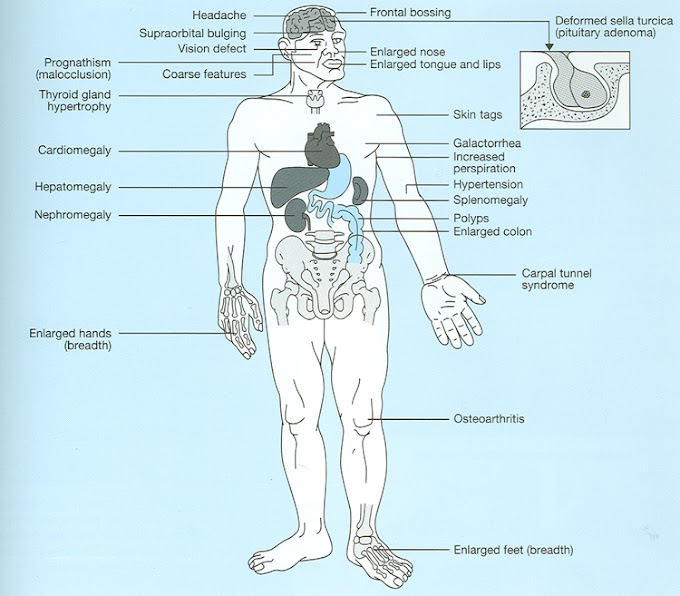 Definition
DefinitionThroat cancer is a disease in which cancer cells grow in the throat. The throat is the hollow tube that runs from behind the nose and mouth, down the neck, to the opening of the esophagus and windpipe.
Cancer occurs when cells in the body (in this case throat cells) divide without control or order. Normally, cells divide in a regulated manner. If cells keep dividing uncontrollably when new cells are not needed, a mass of tissue forms, called a growth or tumor. The term cancer refers to malignant tumors, which can invade nearby tissues and spread to other parts of the body. A benign tumor usually does not invade or spread.
Causes
The exact cause of throat cancer is not known.
Risk Factors
A risk factor is something that increases your chance of getting a disease or condition.
• Smoking or use of any tobacco products (such as chewing, snuffing)
• Excessive alcohol consumption
• Vitamin A deficiency
• Diet low in fruits and vegetables
• Suppressed immune system
• Sex: Male
• Age: 40 or older
• Infections caused by certain viruses such as:
- Epstein-Barr virus
- Human papillomavirus
• Excess consumption of cured meats or fish
• Marijuana use
• Exposure to certain materials such as in:
- Nickel refining
- Woodworking
- Working with textile fibers
Symptoms may include:
• Sore throat
• Persistent feeling that something is caught in the throat
• Difficulty chewing or swallowing
• Difficulty moving the jaw or tongue
• Voice changes or hoarseness
• Pain in the head, throat, or neck
• Lump in the neck
• Unexplained weight loss
• Change in voice quality; referred to as “hot potato” voice
Diagnosis
The doctor will ask about your symptoms and medical history, and perform a physical exam. The doctor may feel for any lumps in the neck. Your throat may be examined using a small mirror and light. You may be referred to an otolayrngologist, a doctor who specializes in head and neck surgery.
Tests may include:
Laryngoscopy – a thin, lighted tube inserted through the mouth to examine the inside of the throat
Panendoscopy – extensive examination of the oral cavity, oropharynx, larynx, esophagus, and trachea using a fiberoptic scope
Incisional Biopsy – surgical removal of a sample of throat tissue to test for cancer cells
Fine-needle Aspiration – use of a thin needle to remove a sample of throat tissue to test for cancer cells
CT Scan – a type of x-ray that uses a computer to make pictures of the inside of the throat
MRI Scan – a test that uses magnetic waves to make pictures of the inside of the throat
PET Scan - this special scan uses radioactive glucose that circulates throughout the body and then gets caught in cells that are rapidly growing, such as cancer cells. An xray is then taken and the radiation shows up, identifying where cancer cells reside.
Treatment
Once throat cancer is found, staging tests are performed to find out if the cancer has spread and, if so, to what extent. Treatment depends on the stage of the cancer.
Treatment may include:
Surgery – surgical removal of a cancerous tumor and nearby tissues, and possibly nearby lymph nodes. In very rare cases, surgery to remove large tumors of the throat may also require removal of tissue that is essential for swallowing. As a result, food may enter the windpipe and reach the lungs, potentially causing pneumonia. In cases when this is a risk, the larynx or voice box may be removed and the windpipe attached to the skin through a hole in the neck, which is used for breathing.
Radiation Therapy – the use of radiation to kill cancer cells and shrink tumors. Radiation may be:
- External Radiation Therapy – radiation directed at the tumor from a source outside the body
- Internal Radiation Therapy – radioactive materials placed into the throat in or near the cancer cells
Combined Modality Therapy - often times, chemotherapy and radiation therapy are used together to kill cancer of the larynx and pharynx (throat). This combined modality approach is often better than surgery or radiation alone, and has been found to be effective to maintain function while curing a significant number of patients.
Prevention
To help prevent throat cancer:
• Don't smoke or use tobacco products. If you do, quit.
• Drink alcohol only in moderation. Moderate alcohol intake is two drinks per day for men and one drink per day for women.
• Eat a healthful diet, one that is low in saturated fat and rich in whole grains, fruits, and vegetables.
• See your doctor and dentist regularly for check-ups and cancer screening.



0 Comments